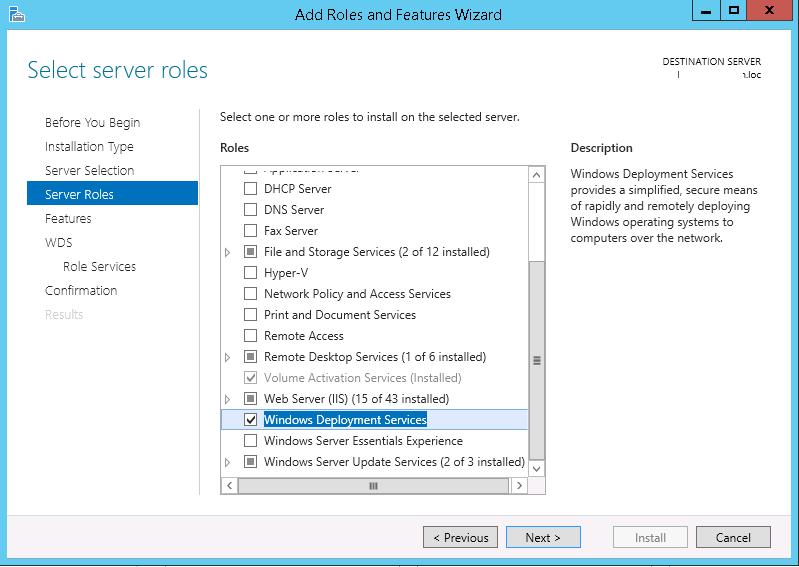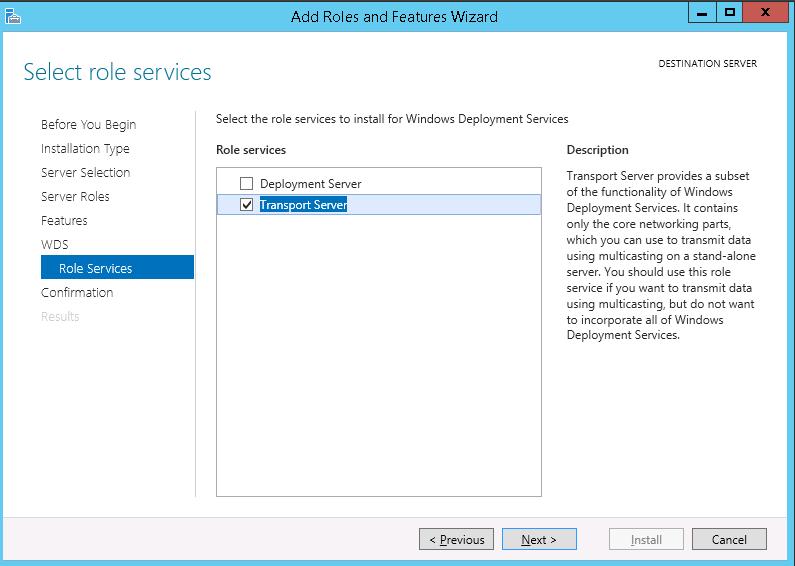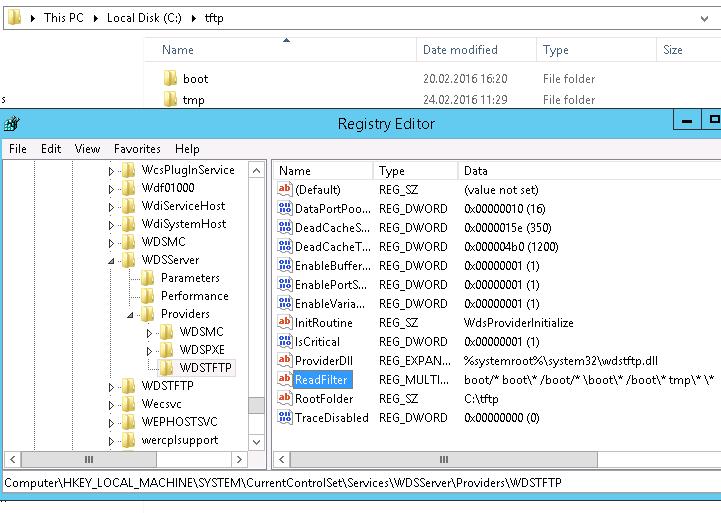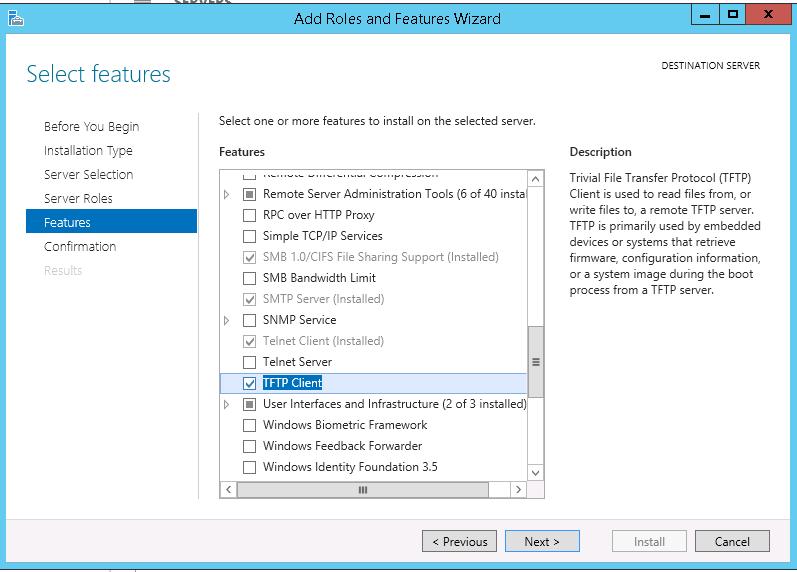How To Install Iis On Windows Server 2012
All Windows Server version support the power to run born TFTP server. Though at that place is no defended part or service of the TFTP server (don't wait for it in the FTP section of your IIS server), this feature, like in Windows Server 2003, is a function of Windows Deployments Services (WDS). TFTP service operates within WDS procedure svchost.exe.
TFTP (Trivial File Transfer Protocol) is a simplified file transfer protocol offering an easy way to download and upload files. As a dominion, TFTP is used in PXE kick systems (network kicking, diskless workstations, etc.), import/export network equipment configurations and another specific tasks. This protocol has no ways of security, authentication or management. Its main advantage is like shooting fish in a barrel customer-side implementation and high performance when large files are transferred. The protocol uses UDP port 69.
Note. Microsoft TFTP server features are rather crippled, but enough to apply PXE booting. In particular, clients can only read information from such TFTP server, but writing is not available.
To install the TFTP service on Windows Server 2012 R2, start Server Managing director and select Windows Deployment Services role using Add Roles and Features Wiazrd .

In the adjacent step, select only Transport Server in the WDS office components and uncheck Deployment Server.

After the role is installed, create a directory, which is going to be a root directory of the TFTP server, for instance, C:\tftp.
And so using the Registry Editor in HKLM\Organisation\CurrentControlSet\services\WDSServer\Providers\WDSTFTP create a new cord parameter with the proper noun RootFolder and value containing the path to the root directory created earlier.

Pay attention to the value of ReadFilter parameter. By default, it allows downloading files only from \kicking and \tmp directories. If you lot need an opportunity to download files from the root or other folders, change the ReadFilter value to \*.
Start WDS with the post-obit command:
WDSUTIL /Start-TransportServer
Tip. To automatically showtime the service, change the startup type of Windows Deployment Services to Auto using services.msc or the control prompt:
set-service WDSServer -StartupType Automatic
In Windows Firewall, a rule will announced, which allows the incoming traffic to UDP Port 69 (the service responds from whatsoever port higher than 1023). Some antiviruses tin can block Port 69 (McAffee Enterprise does then).
So yous have configured your TFTP server.
To test the TFTP server, y'all'll need the TFTP customer. Information technology can be installed using Server Managing director, in which you lot select TFTP Customer.

Let's endeavour to connect to the deployed TFTP server locally and download test.zip file.
You can download the file using this command:
tftp –i localhost Get tmp\examination.cypher C:\temp\test.goose egg
In theory, it should, only in practise I got the following error after running the concluding control:
Connect request failed

When starting or restarting Windows Deployment Services Server, the following issue from WDSTFTP service and EventID 259 appeared in the Application log:
The root folder for the Windows Deployment TFTP server is non configured. Error Data: 0x2
To make the TFTP server work, I had to install the component of the role WDS -> Deployment Service and delete information technology at one time. Later it had been installed, I changed the RootFolder value from C:\RemoteInstall to c:\tftp. So I tried to download the file once again.
PS C:\temp> tftp -i localhost become boot\examination.zip
Success!
Nosotros have considered how to deploy a TFTP server in Windows Server 2012 easily with no third-political party tools. The features of this kind of a server will be crippled, so in more complicated installations the culling TFTP server implementations are preferable, due east. yard., tftpd32.
Source: http://woshub.com/how-to-install-tftp-server-on-windows-server-2012-r2/
Posted by: chavisiont1981.blogspot.com

0 Response to "How To Install Iis On Windows Server 2012"
Post a Comment